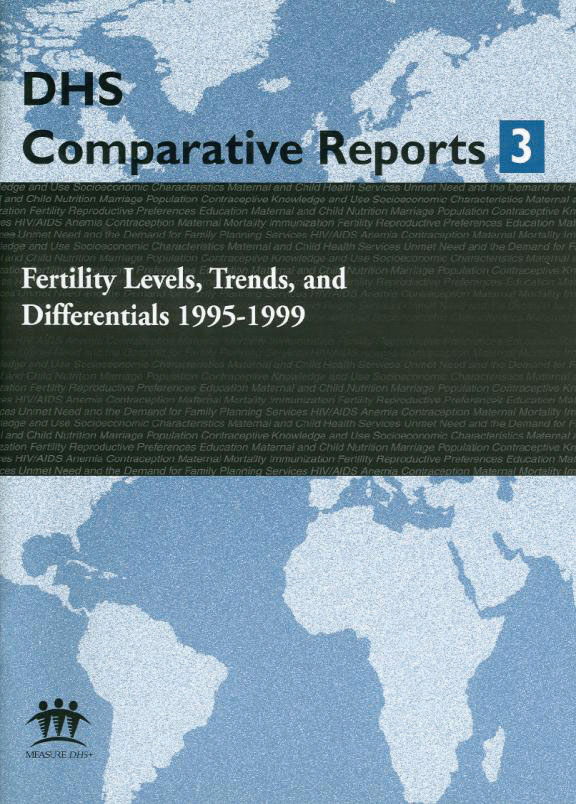
Abstract:
Based on DHS surveys conducted between 1990
and 1999, this report shows fertility rates,
trends, and differentials for 43 countries.
Eight types of measures are presented
including total and age-specific fertility
rates, general and crude birth rates, the
mean number of children born to women, total
marital fertility rates and marital duration,
specific fertility rates, age at first birth,
parity progression ratios, and birth
intervals. These indicators are presented for
the total country and by women’s residence,
education, work status, and migration status,
and by the education and occupation of their
husband. Trends are examined for all
countries using birth history data and for 22
countries by comparison with a previous DHS
survey in each country. The Bongaarts
proximate determinants indexes are calculated
to assess the impact of these trends on
fertility. The total fertility rate (TFR) for
the three years preceding the survey in each
country ranges from a high of 7.2 children
per woman in Niger to 2.3 children per woman
in Vietnam. Ten countries, Yemen and nine
countries in sub-Saharan Africa, have TFRs of
6 children or more per woman. The high
fertility in these countries is due mainly to
early entry into motherhood and little
behavior aimed at limiting births. Fertility
limiting behavior including relatively high
levels of contraceptive use and long
intervals between births, is responsible for
most of the low fertility levels in these
countries. Fertility has declined in all
countries except Colombia.
 Fertility Levels, Trends, and Differentials 1995-1999 (PDF, 4128K)
Fertility Levels, Trends, and Differentials 1995-1999 (PDF, 4128K)
